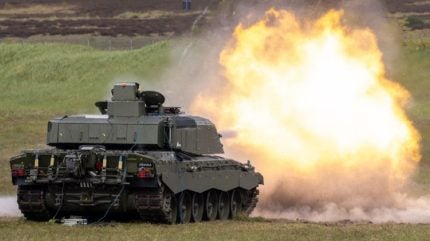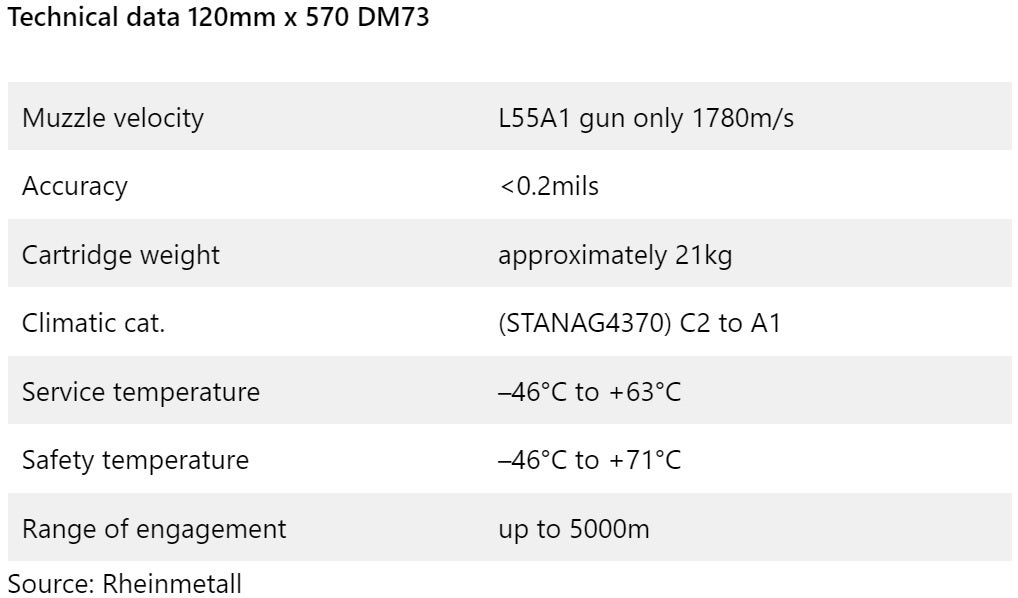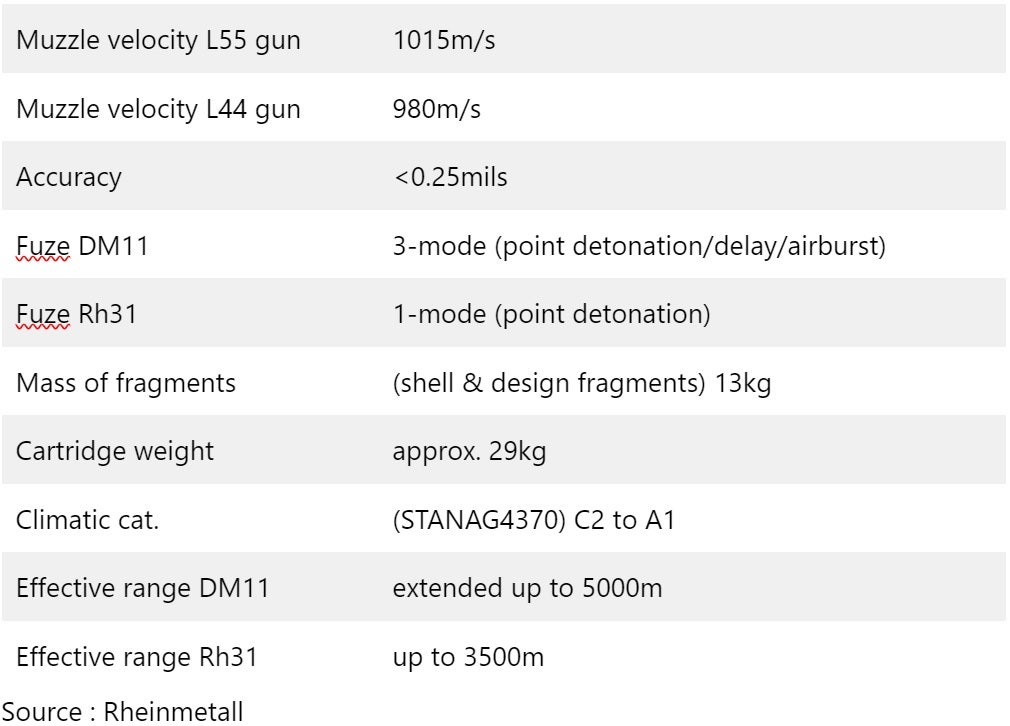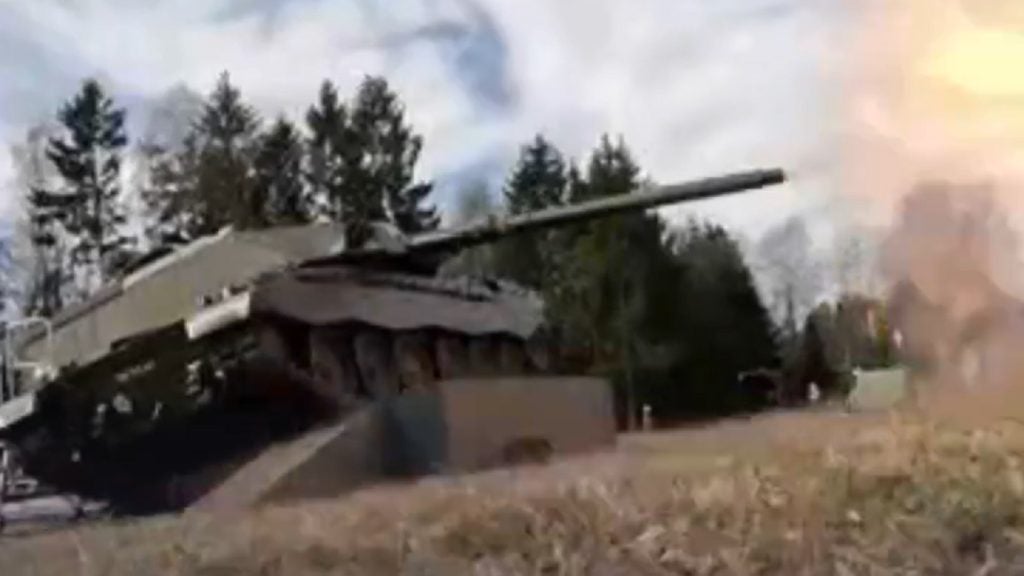
As test firing of the new main gun system of the British Army’s new Challenger 3 main battle tank (MBT) continues, attention has turned to the types of ammunition that could be fired, ranging from kinetic energy tank busters to multi-mode high explosive (HE) fragmentation.
Equipped with the Rheinmetall 120mm L55A1 high pressure gun, the Challenger 3 has been seen in recent footage published on 14 May 2024, by the UK’s Defence Equipment & Support (DE&S), an arm of the Ministry of Defence (MoD), showing the firing of the main gun in ranges in Germany.
Reiterating what was stated in the original April release, DE&S stated that live firings took place “over a range of distances” to test the accuracy of the new main gun.
The build of the Challenger 3 is being performed by Rheinmetall BAE Systems Land (RBSL), a joint venture between the UK’s BAE Systems and Germany’s Rheinmetall AG for military vehicle design, manufacture and support.
Much of the technology being installed in the new Challenger 3 tank is derived from Rheinmetall’s own systems, including the L55A1 120mm smoothbore main gun, the same type as fitted to the Leopard 2A6 MBTs currently operated by Germany and numerous other European militaries.
The gun replaces the L30A1 120mm main gun fitted to the Challenger 2, which is unique among Nato forces in that it has a rifled barrel, a technique that spins the shell to improve accuracy and range.
Challenger 3: potential ammunition types
According to Rheinmetall, the 120mm L55A1 high pressure gun is the latest iteration of the original L55 system and has been qualified in service since 2019. The US Army also operates the L55, under a license manufacture known as the M256E1.

Rheinmetall states that the L55A1 can be integrated onto existing MBTs as an upgrade option, with the system capable of operating the three-mode programmable high explosive (HE)-round DM11. Other ammunition able to be fired from the gun includes the DM73 and DM63A1 armour penetrating round, as well as the DM88 target practice shot, while HE option include the aforementioned DM11, Rh-31, and DM98 target practice munition.
The company also details the specifications of its L55A1-compatible ammunition, with the advanced Armour Piercing Fin Stablised Discarding Sabot (APFSDS) DM73 kinetic energy round featuring an increased range due to an “enhanced propulsion unit” from its “SCDB technology”.

The combustible cartridge case includes a fabric reinforcement to prevent loss of propellant powder
in case the cartridge is damaged, Rheinmetall states. The DM73 requires the high-pressure gun L55A1 and cannot be used in either L44 or L55 gun systems.
The DM11 HE round provides three programmable modes; Point detonation, for instance against bunkers and double-reinforced concrete walls; Point detonation with delay, for instance against targets behind cover, light and medium armoured vehicles; and Airburst against area of effect targets like ATGM fortifications and dismounted infantry.
Rheinmetall states that because of this, the DM11 ammunition’s additional construction fragments “maximise the effect on the target”, specifically in airburst mode.
Technical data 120mm x 570 DM11 and Rh31

Programming of the round is conducted fully automatically by the fire control system when already chambered, shortly before firing. The DM11 ammunition requires an additional programming kit integrated in the main battle tank, available for all Rheinmetall 120mm weapon systems.
The DM11 munition, without the programmable modes and set to point detonation, is known as the Rh31 round, and does not require programming kit integration into the main battle tank host. Given this, the Rh31 can be used in every available in service Rheinmetall gun and Leopard 2 or M1A1/A2 Abrams MBTs.
It should be noted that the effective engagement range, a more granular battlefield matric, of tank ammunition varies depending on the target, with heavily armoured MBTs likely requiring to be targeted at closer ranges in order to bring about a vehicle kill.
No DU, but an EKE forthcoming?
A total of 148 British Army Challenger 2s will be modernised to the Challenger 3 variant, incorporating a new turret, the L55A1, improved sensors, and vehicle powerpack. However, the improvement to the main gun is the most telling, bringing the British Army’s MBT into ammunution commonality with Nato allies.
However, a significant reduction in lethality will be seen with the loss of a depleted uranium ammunition capability, as is currently available for the rifled L30A1 main gun.
According to a UK Parliament note from 2001 on the use of depleted uranium (DU) in tank ammunition, the rounds have a 10-20% greater penetration than Tungsten and considered to be easier to manufacture than Tungsten alloy.
However, established potential health risks associated with the use of depleted uranium rounds have also likely been a factor, particularly for operators of tanks struck by DU rounds, which was established could lead to levels of DU in the kidney (4ppm) that exceed toxicity thresholds and result in a maximum whole body radiation dose (40-48mSv) outside the UK annual occupational radiation limit (20 mSv/year).

The UK is also exploring with Germany the possibility to develop a new kinetic energy armour piercing munition, which would partially offset the loss of a depleted uranium round, which cannot be fired from European L55A1 guns, unlike the L30A1 of the Challenger 2.
In April 2023 the UK signed an agreement with Germany to begin work on the next phase in the development of more lethal ammunition for the Challenger 3, with the UK MoD’s Defence Equipment and Support work on new armour-piercing tank ammunition centering on the Enhanced Kinetic Energy (EKE) round, intended to provide a “step change” to British Army lethality.
In order to reach the armour penetration levels reached by DU, Tungsten-derived rounds have to travel at higher speeds than existing tank ammunition, indicating a potential research path that the UK and Germany could be pursuing with the EKE capability.



